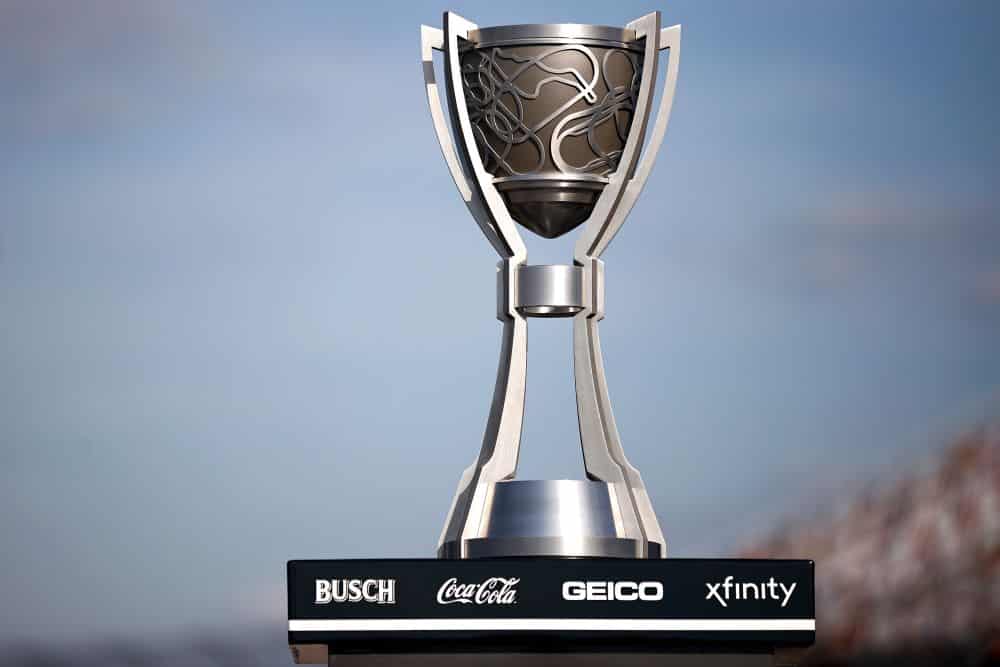It’s no secret that the NASCAR playoff and championship system has come under frequent questions of legitimacy.
For the first time, reports have emerged that tweaks might be coming, and if that’s the case, I’ve got a few suggestions to return them to their fullest legitimacy.
Big names of the industry and truckloads of fans have all made suggestions of how to go about determining the champion in what is supposed to be the top level of stock car racing on the planet.
These ideas have ranged from going back to the pre-Chase season-long system, to the Chase era, to tinkering on the edges of the current system to things completely out of left field.
How about a compromise?
There was a time in this country when compromise was the way to solve problems. While it’s mostly a dirty word in modern politics that will get you “primaried” faster than you can say “gridlock,” it doesn’t have to be a dirty word in NASCAR.
The season-long system went away for credible reasons.
The Chase went away mostly because the powers that be did not feel it went far enough. There was a yearning to incorporate “game seven moments.” Ending playoff rounds with four drivers being eliminated will definitely cause drama, but it also causes millions of dollars of wrecked racecars and avoidable danger to everyone involved.
The best way forward is to improve the current system and bring back elements of what has worked in the past.
Prior to the 2023 season, the modern playoff format had a top-30 rule.
This rule was pretty simple. Even if you managed to win a race and compete in every event, you would not be eligible for the playoffs if you did not finish in the top 30 in driver points. This came into play with Kyle Busch’s controversial 2015 title. After he missed the first 11 races of the season due to injury, Busch won his fifth race back at Sonoma Raceway.
However, even after that win, he only sat 37th in points, had received a playoff waiver for injury, but was still ineligible at the time because of how low he was in points. The top-30 rule wasn’t perfect and everyone expected Busch to blow past it, but at least there was a bar. He wound up winning three more races, finished the regular season 27th in points, made the playoffs and won the championship.
The top-30 rule should be reinstated.
That is a very easy fix. Had it been in place, Harrison Burton would not have made the playoffs last season. What is bad about that? His amazing win at Daytona International Speedway was marred by controversy for being an undeserving playoff competitor who removed someone perceived to be more worthy, like Busch, Bubba Wallace or Ross Chastain.
The win should’ve been honored without controversy, even if It didn’t result in an inevitable first round playoff exit.
Let’s put something on the line during qualifying.
Who wants to make that more compelling? One point should be awarded for winning the pole. You want to see guys give it their all during qualifying? A point will do that. Unlike awarding a point for leading a lap, this wouldn’t reward a cheap strategy play that can often get a driver a single lap led. This is all about speed and who doesn’t love speed?
The latest iteration of similar controversy comes via Shane van Gisbergen.
The next improvement to be made is to eliminate the automatic qualification from winning a race and raise the bar to needing to win two races to automatically qualify. This would mean that as of now, van Gisbergen would still be in because of his multiple wins and being above 30th in points. That should be enough. But can you imagine the drama if he stumbles down in the points and flirts with falling out of the top 30?
Going to two wins to guarantee a playoff spot will thin out the field of automatic qualifiers and restore more value to consistency throughout the season, even without a win. This would’ve also caused Jamie McMurray to make the playoffs in 2010, when he won two crown jewel races. His case was one of the most criminal playoff snubs. He had won more races than the two ‘wild-card’ drivers who made it in, Jeff Burton and Clint Bowyer, but they were higher in overall points, so he was left out. In my system, two wins get you in as long as you’re in the top 30, which McMurray was.
Those changes are all about the regular season. Now, what should happen with the playoffs actually begin?
First, thin the field from 16 to 15. While many advocate for the former Chase format of 10 or 12, there are reasons to have more than that, driven by finance and entertainment. So, give a nod to the purists, but reduce the field by just one to keep it close to where we are now. In today’s NASCAR Cup Series, if you are in the top 15, you are very close to the top of the field, and going down to 12 or fewer would leave out some truly incredible drivers, teams, personalities, storylines, and sponsors. This would mean that last season, Joey Logano, who was 15th in points during the regular season with one win, would’ve been the last driver to qualify.
The next area for improvement focuses on how drivers are eliminated during the playoffs and how points are reset. We have too many rounds, too many cutoffs and too many resets. Let’s simplify things by reducing the playoffs to two rounds. Let 15 drivers into a 10-race playoff format. During the playoffs, grant an automatic advancement to the final round for winning during the first round. After the first five playoff races, trim the field from 15 to eight. Then, let the eight remaining drivers duke it out over the final five races to determine the champion.
What could go wrong? Some things, to be clear. No system is going to be perfect.
We aren’t seeking perfection, we’re seeking improvement. A driver under my proposed system could theoretically win a championship without winning a single race all year. That would be very unlikely, but technically possible. It would also mean they were incredibly consistent throughout the year, minimizing poor finishes and running at or near the front of the field all season long. That would make those rare situations worthy, even if unspectacular.
You could also return to the possibility of having a driver clinch the championship before the final race. Again, that would be quite unlikely, but if it happens, so what? They thoroughly beat the pants off the best of the best if they’re able to pull that off. And they shouldn’t be penalized if something like a blown engine happens in the final race after they waxed the field throughout the rest of the season.
Under this proposed system, a driver could advance to the final round and suffer a DNF in the first race, but still have four more opportunities to make up for it. If they have two bad races in a row, they will probably fall out of contention, but there comes a point where that just has to be the case.
The NASCAR Championship can return to its glory with significant changes, but while keeping much of the framework in place and without reverting exactly to things we’ve done before. Reinstate the top-30 rule, award a point for winning the pole, require two wins for automatic playoff qualification, thin the playoff field to 15 drivers, cut from four playoff rounds to two and let the eight best drivers and teams duke it out over the final five races of the season to determine the champion.
This system may not be perfect, but it would be a dramatic improvement from what we have today.
Steve Leffew joined Frontstretch in 2023 and covers the Xfinity Series. He has served honorably in the United States Air Force and and lives in Wisconsin.




